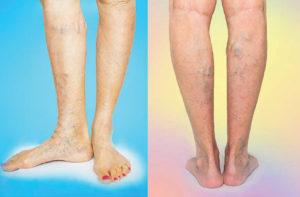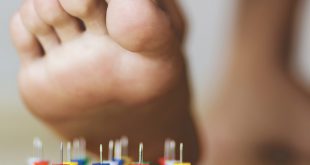 How Do Spider Veins and Varicose Veins Form?
How Do Spider Veins and Varicose Veins Form?
Everyone these days wants to look younger, and live healthier. There are many treatments available to help make this happen, but what can be done about spider veins or varicose veins? And how do they form in the first place?
Nearly 80 million Americans have some sort of vein issue. Whether it be tiny spider veins or the larger varicose veins on their legs, they’re unsightly – and the larger veins can also pose a potential health risk.
Incidentally, whereas arteries are the blood vessels that carry oxygen-rich blood from the heart to organs and tissues throughout the body, veins do the opposite. Veins carry the “used” blood with low oxygen back to the heart for reoxygenation, and the cycle continues.
Let’s talk about how varicose veins and spider veins form, and what can be done to treat them.
Causes and Symptoms of Spider Veins
Spider veins differ from varicose veins mainly in terms of size. Spider veins are normally thin like a thread, and they do not bulge from the skin like varicose veins do.
Both spider veins and varicose veins form when the one-way valves that help blood to flow in the veins stop functioning properly. The valves can allow blood to flow backward and to pool in the vein, causing damage and a weakening of the vein wall. This pooling can be a small amount, causing spider veins, or a large amount, causing varicose veins.
Spider veins can happen both in the legs and the face, particularly on the nose. Spider veins are small and can appear like a web.
Whereas spider veins are usually red, varicose veins can be slightly raised from the skin and can appear blue, red, or purple. These veins are a health risk. Many people do not realize that varicose vein treatment is covered by insurance.
Causes and Symptoms of Varicose Veins
Varicose veins are larger than spider veins, but both occur because of venous insufficiency. Because the blood vessels in the legs are much larger than those found in the face, varicose veins are noticeably larger – and can bulge to the point where they can be seen and felt easily.
Based on the severity of varicose veins, they can be accompanied by cramping, pain, itching, bleeding, increased circulatory issues (such as swelling of the legs and ankles), a dull ache, or a feeling of heaviness in the legs. Because of their larger size, varicose veins can cause problems with a person’s circulation or increase the risk of developing blood clots.
Who Can Treat My Varicose Veins?
If you have either spider veins or varicose veins that you would like to be less noticeable – or to have them removed completely – contact the skilled medical team at Premier Vein & Vascular. Dr. Saiyad is triple board-certified in internal medicine, cardiology, and vascular medicine, so he is triply qualified to successfully treat unsightly or painful spider veins or varicose veins.
If you have symptoms of varicose or spider veins, it’s important to have a medical examination. Early treatment is optimal, and if your condition is more than just superficial, it can be lifesaving.
Contact us today in the Tampa and Largo area by calling (888) VEINCARE (834-6227) or request a consultation online now at www.premierveinandvascular.org, and take the first step to getting those unsightly veins cleared up – and get your legs and face camera-ready and beach-beautiful.
Premier Vein Care
(888) VEINCARE
www.premierveinandvascular.org
Check Also
Revolutionizing Healthcare: Exploring Regenerative Medical Treatments at QC Kinetix
By Daniel Sucherman, MD In recent years, the field of regenerative medicine has emerged as …
 Central Florida Health and Wellness Magazine Health and Wellness Articles of the Villages
Central Florida Health and Wellness Magazine Health and Wellness Articles of the Villages


